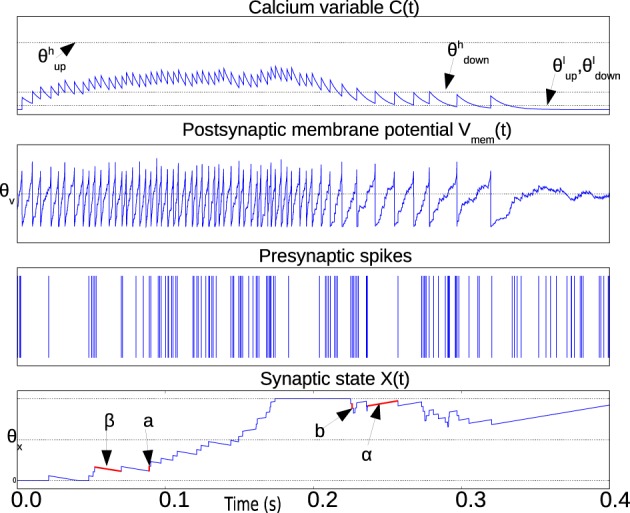Figure 1.

Illustration waveforms of the spike-based perceptron learning rule showing key parameters from Equations (1–5). The Calcium variable plot shows the ranges defined by within which synaptic plasticity is active according to Equations (1) and (2). The post-synaptic neuron membrane potential plot shows the threshold θV. Incoming synapses can be depressed (potentiated) if Vmem(t) is below (above) θV. The bottom plot showing the synaptic state X(t) illustrates the jump and drift mechanism. On each pre-synaptic spike, the mutually exclusive conditions in Equations (1) and (2) are evaluated. If the condition in Equations (1) and (2) is fulfilled, the synaptic state jumps up (down) by a step a (b). The synaptic state is continuously drifting to a high or low state depending on whether it is above or below the threshold θX, respectively.
